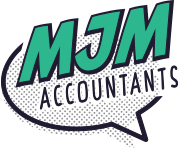As part of the government’s response to the Coronavirus pandemic, eligible employers can claim a JobKeeper payment subsidy of $1,500 per fortnight, per eligible employee for a maximum period of six months.
Self-employed individuals (i.e., businesses without employees) may also qualify to receive the JobKeeper Payment.
Announcing the package, Treasurer Josh Frydenberg said that in return for the wages being paid, businesses will be expected to keep their staff employed during the pandemic.
“There are legal obligations for that to occur. And of course our focus here is supporting the employee who has done it very, very tough and obviously needs that security, needs that surety that they will continue to get that income support," he said.
Eligibility
There are two levels of eligibility; for employers and employees.
Eligible employers are those with:
Turnover below $1bn that have experienced a reduction in turnover of more than 30% relative to a comparable period 12 months ago (of at least a month); or
Turnover of $1bn or more that have experienced a reduction in turnover of more than 50% relative to a comparable period 12 months ago (of at least a month); and
Are not subject to the Major Bank Levy.
Sole traders and the self-employed with an ABN, and not-for-profits (including charities) that meet the turnover tests are eligible for the JobKeeper payment.
Eligible employees are those who:
Were employed by the relevant employer at 1 March 2020; and
Are currently employed by the employer (including those who have been stood down or re-hired); and
Are full time, part-time, or long term casuals (a casual employee employed on a regular basis for 12 months as at 1 March); and
Are at least 16 years of age; and
Are an Australian citizen, hold a permanent visa, are a Protected Special Category Visa Holder, a non-protected Special Category Visa Holder who has been residing continually in Australia for 10 years or more, or a Special Category (Subclass 444) Visa Holder; and
Are not in receipt of a JobKeeper Payment from another employer.
While it appears that businesses without employees can potentially qualify for JobKeeper Payments, it is not clear at this stage what conditions will need to be satisfied.
How the support is calculated
The ATO will administer this program and will make the $1,500 payments based on payroll information. The payments will be made monthly in arrears, so it is essential that you ensure your business and your employees continually meet the eligibility criteria.
The business will continue to receive the payments for eligible employees while they are eligible for the payments. While the program is expected to run for 6 months, payments will stop if the employee is no longer employed by the relevant employer.
How the support is provided
To access the JobKeeper subsidy, you should talk to your accountant or adviser to assist you with the registration process and calculations.
If you want to manage the process yourself, you must:
Register
We can register your intent to apply for the JobKeeper subsidy with the ATO to keep up-to-date and know when applications can be lodged.
Assess turnover
Ensure you have an accurate record of your revenue for the 2018-19 income year and for the 2019-20 year to date
Ensure you keep an accurate record of revenue from March 2020 onwards
Compare your revenue for the whole of March 2019 with the whole of March 2020
Measure the % decline in your revenue and ensure it has declined by more than 30%
If you are not eligible in March, you may become eligible in another month
Identify eligible employees
Nominate the employees eligible for the JobKeeper payments – you will need to provide this information to the ATO and keep that information up to date each month. The ATO will use Single Touch Payroll to prepopulate the information in most cases.
Notify all eligible employees that they are receiving a JobKeeper payment. Employees can only be registered with one employer.
Pay eligible employees at least $1,500 per fortnight (before tax). If an employee normally receives $1,500 or more per fortnight before tax the employee should continue to receive not less than $1,500 (before tax).
Pay superannuation guarantee on normal salary and wages amounts paid to employees. If the employee normally receives less than $1,500 per fortnight before tax, the employer can decide whether to pay superannuation on the additional amount that is paid as a result of the JobKeeper program.
The subsidy will start on 30 March 2020, with the first payments to be received by employers in the first week of May.
Businesses are now able to register their interest in participating in the Payment. These businesses will need to provide an ABN for the business, nominate an individual to receive the payment, provide the individual’s TFN and declare their continued eligibility for the payments. Payments will be monthly to the individual’s bank account.
Source: Support For Business, The Treasury
We can assist you with the registration process and calculations.
Give us a call on 07 5500 0898 or email info@mjmaccountants.com.au.
After all, there is strength in numbers.
